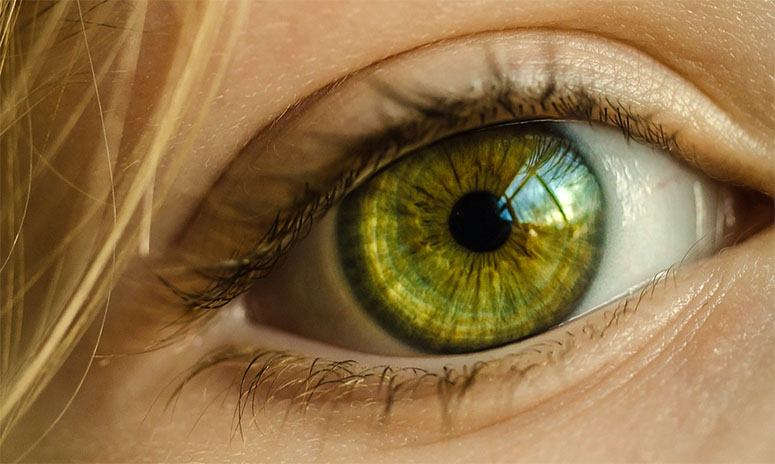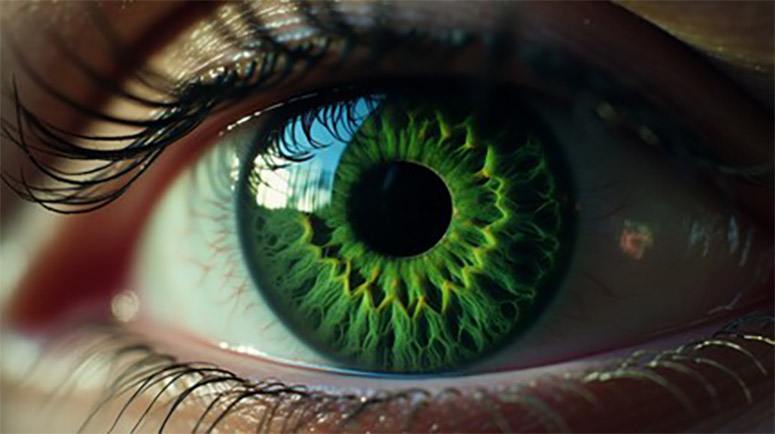Contents
- 1 How are green eyes formed?
- 2 What are the genetic factors that determine eye color?
- 3 What are the environmental factors that can affect eye color?
- 4 What are the other factors that can influence eye color?
- 5 What are the common misconceptions about green eyes?
- 6 Are green eyes rare?
- 7 What are the advantages and disadvantages of having green eyes?
What are the odds of having green eyes? Green eyes have long captivated human imagination, often being associated with mystery and allure. However, what precisely causes this striking eye color?
This article delves into the science behind green eyes, examining their formation and the role of melanin.
It also investigates the genetic and environmental factors that influence eye color, including the likelihood of inheriting green eyes and how factors such as sun exposure and diet may contribute to this characteristic.
Readers are invited to explore common myths surrounding green eyes, discuss their rarity, and consider their advantages and disadvantages.
This exploration aims to illuminate the fascinating world of eye color and what it signifies about individuals.
How are green eyes formed?
The formation of green eyes is a complex process influenced by multiple genetic factors and variations in melanin levels, which determine the iris color associated with this particular eye trait.
Eye color inheritance is polygenic, meaning it is regulated by multiple genes, with both dominant and recessive alleles playing critical roles in establishing the final phenotype.
Factors such as the presence of specific genetic markers can result in various hues, including green, brown, and blue, thereby highlighting the remarkable diversity inherent in human genetics.
What is the role of melanin?
Melanin plays a crucial role in determining the pigmentation of the eyes, influencing not only the perceived color but also eye health and genetic predispositions to specific eye color traits.
In individuals with green eyes, the quantity and type of melanin present in the iris significantly impact the overall eye color, as varying levels of melanin contribute to the unique optical properties of the eyes.
Understanding the distribution of this pigment is essential for explaining why some individuals exhibit rare eye colors, such as green, while others have brown or blue eyes.
There are several types of melanin, including eumelanin, which encompasses black to brown tones, and pheomelanin, which provides lighter, reddish hues.
The specific ratio of these melanins not only determines eye color but also plays a critical role in protecting against UV damage and oxidative stress.
For individuals with green eyes, lower levels of eumelanin combined with a dominant presence of pheomelanin result in that distinct hue.
Genetics significantly influence melanin production – certain gene variants may predispose individuals with green eyes to varying levels of melanin, which in turn affects their eye health and susceptibility to conditions such as macular degeneration.
What are the genetic factors that determine eye color?

The genetic factors that determine eye color are complex and involve multiple genes that regulate the distribution and quantity of melanin present in the iris, ultimately resulting in the manifestation of colors such as green, blue, or brown.
The genetics of eye color is significantly influenced by several key genes, including OCA2 and HERC2, which interact in intricate ways to produce the observable traits seen in individuals.
A thorough understanding of these genetic markers provides valuable insights into eye color inheritance and the likelihood of transmitting traits, such as green eyes, to subsequent generations.
What are the chances of having green eyes based on genetics?
The likelihood of possessing green eyes is significantly influenced by genetic factors and inheritance patterns, with specific phenotypes associated with the presence of certain alleles transmitted through family lineage.
Statistically, individuals with a family history of green-eyed relatives have a greater probability of inheriting this eye color trait – however, the overall prevalence of green eyes in the global population remains relatively low.
This genetic probability can be analyzed by examining eye color distribution within families, providing valuable insights into the transmission of eye color traits.
Research indicates that only approximately 2% of the global population possesses green eyes, categorizing this eye color among the rarest. The inheritance of eye color is a complex process involving multiple genes, including OCA2 and HERC2, which play roles in melanin production.
If both parents carry the recessive traits associated with green eyes, the likelihood of their child inheriting this distinctive eye color increases significantly.
Certain populations, particularly in Northern and Central Europe, demonstrate a higher prevalence of individuals with green eyes, with rates reaching as high as 16%.
This variation serves as a testament to the interplay of genetic diversity and ancestry, illustrating how familial lineage can influence eye color outcomes for successive generations.
What are the environmental factors that can affect eye color?
Environmental factors can have a significant impact on eye color, resulting in alterations in eye pigmentation that may occur throughout an individual’s lifetime, often due to exposure to sunlight or other environmental stimuli.
These factors can influence the expression of specific genes responsible for melanin production, leading to variations in eye color that can range from subtle changes to more pronounced transformations.
Understanding these influences is crucial for recognizing the interaction between genetics and environmental factors in shaping eye color traits.
How can sun exposure change eye color?
Sun exposure has been shown to influence eye color, potentially resulting in changes in eye pigmentation due to increased melanin production in response to ultraviolet (UV) radiation.
Individuals with lighter eye colors, such as blue or green, may exhibit temporary alterations in their eye color when subjected to bright sunlight – their irises may appear darker or more vibrant as a result of melanin stimulation.
This phenomenon illustrates the dynamic interplay between genetic factors and external influences in shaping eye color traits.
Conversely, prolonged exposure to sunlight can lead to long-term effects, as consistent UV exposure may cause a gradual darkening of the iris, particularly in individuals with lighter shades.
Some studies indicate that this change might function as a protective mechanism against potential damage from UV rays.
Anecdotal evidence frequently highlights personal accounts of individuals observing subtle shifts in their eye color during the summer months or following vacations in sunny destinations.
Understanding these influences raises an interesting question – what are the odds of having blue eyes? While environmental factors like sun exposure can impact eye color, the likelihood of having blue eyes is predominantly determined by genetic inheritance.
Despite the influence of environmental factors, the genetic odds of having blue eyes are the primary determinant.
Can diet affect eye color?
Diet can significantly influence changes in eye color, as certain nutrients and dietary components may affect melanin levels in the body, potentially altering eye pigmentation over time.
While the direct relationships between specific foods and eye color remain largely anecdotal, some research indicates that a nutrient-rich diet may promote healthier eye pigmentation and enhance the vibrancy of colors such as green or blue.
This connection underscores the importance of considering both genetic factors and dietary choices when examining traits related to eye color.
For example, foods rich in antioxidants, such as leafy greens and vibrant fruits, contribute to overall eye health and may indirectly support the body’s capacity to maintain or even enhance specific eye colors.
Nutrients like lutein and zeaxanthin, which are abundant in foods such as kale, spinach, and blueberries, are known to improve visual clarity and could play a role in the preservation of eye pigmentation.
Furthermore, studies suggest that a diet high in omega-3 fatty acids, commonly found in fish, may contribute to a healthier eye structure, potentially influencing the depth and brightness of eye colors over time.
By incorporating such nutrient-dense foods into their diets, individuals may not only support their overall health but also promote vibrant eye pigmentation.
What are the other factors that can influence eye color?

Several factors can influence eye color beyond genetics and environmental elements, including age, medical conditions, and hereditary traits that may lead to changes in eye pigmentation over time.
As individuals age, their eye color may either lighten or darker, which can be attributed to variations in melanin production or the effects of specific medical conditions that modify eye morphology.
A thorough understanding of these factors offers a more comprehensive perspective on the variability of eye color throughout an individual’s life.
How can eye color change with age?
Eye color can undergo significant changes with age, primarily due to natural variations in melanin production that influence eye pigmentation throughout a person’s life.
For some individuals, vibrant green eyes may gradually fade to a lighter shade, whereas others may experience darkening as they age.
These changes reflect the complex interplay of genetic and environmental factors, highlighting the importance of hereditary traits in understanding long-term variations in eye color.
Recent scientific studies have demonstrated that melanin production in the iris can fluctuate due to multiple factors, including hormonal changes and exposure to sunlight.
For example, increased ultraviolet (UV) exposure can stimulate greater melanin production, resulting in darker shades, while the aging process may lead to a reduction in melanin levels, producing lighter eye colors.
Observational studies conducted across various populations have documented these shifts – one study involving older adults found that nearly 30% exhibited noticeable color changes, underscoring the intricate and dynamic nature of eye pigmentation throughout the various stages of life.
Can medical conditions affect eye color?
Certain medical conditions can result in unexpected changes in eye color, often due to alterations in eye pigmentation or underlying genetic disorders that influence melanin levels.
Conditions such as Horner’s syndrome, Waardenburg syndrome, and certain ocular disorders can affect the appearance of the iris, leading to noticeable changes in eye color.
These medical influences emphasize the intricate relationship between genetics and health in determining the eye characteristics an individual may present.
For instance, Horner’s syndrome, which can arise from nerve damage, may lead to lighter pigmentation in one eye due to decreased sympathetic nervous system activity.
Waardenburg syndrome, a genetic disorder, frequently results in strikingly different eye colors, a condition known as heterochromia, along with other pigmentation abnormalities.
Additionally, inflammatory conditions such as uveitis can cause temporary changes in eye color due to modifications in the iris structure and pigment deposition.
These examples illustrate how various medical conditions intricately interact with genetic backgrounds, highlighting the complex interplay that governs eye color beyond mere heredity.
What are the common misconceptions about green eyes?
Numerous misconceptions exist regarding green eyes, often perpetuated by myths and societal perceptions that exaggerate their rarity and significance.
It is a common belief that green eyes are exclusively linked to certain traits, such as being special or magical. However, the reality is that eye color, including green, results from complex genetic variations.
By dispelling these myths, we can enhance understanding of the true nature of green eyes and their place within the broader context of eye color diversity.
Such beliefs can lead to stereotypes that unfairly categorize individuals with green eyes, assigning them roles that emphasize uniqueness or allure without justification.
This association not only affects the self-perception of those with this eye color but also influences societal expectations and interactions.
Misconceptions about green eyes may also arise from cultural representations in literature and media, which frequently elevate their status to an almost mythical level.
Acknowledging the reality behind green eyes aids in demystifying the discourse surrounding them and fosters a more inclusive dialogue concerning the spectrum of human beauty.
Are green eyes rare?
Green eyes are considered rare, representing approximately 2% of the global population. They vary significantly among different racial and ethnic groups. For instance, in certain European countries, such as Scotland and Ireland, the proportion of individuals with green eyes can be as high as 13%.
Conversely, populations in Asia and Africa show a much lower frequency of green eyes, often less than 1%.
Understanding these statistics helps clarify what are the odds of having green eyes are and highlights the role of genetic factors in determining eye color.
The rarity of green eyes contributes to their unique status and often sparks fascination, further amplifying the interest in this distinctive trait.
What are the advantages and disadvantages of having green eyes?

Having green eyes can present both advantages and disadvantages, influenced by various factors including health implications, social perceptions, and cultural significance.
In numerous cultures, green eyes are often regarded as symbols of mystery and uniqueness, which can result in both positive stereotypes and unrealistic expectations imposed on individuals who possess this eye color.
The societal admiration for green eyes may sometimes lead to feelings of envy or misconceptions, thereby complicating interpersonal relationships.
While individuals with green eyes may appreciate the compliments and intrigue that their eye color elicits, they can also encounter judgments based solely on their appearance.
Furthermore, the association between lighter eye colors and an increased risk of certain health conditions, such as ocular disorders, raises valid concerns that warrant attention, underscoring the importance of prioritizing regular eye examinations.
Find details on the probability of having green eyes in the FAQ section lower on this page.
Embark on a journey through the world of probabilities and rare events. Expand your knowledge and curiosity by delving into our articles at WhatAreTheOddsOf.NET.



